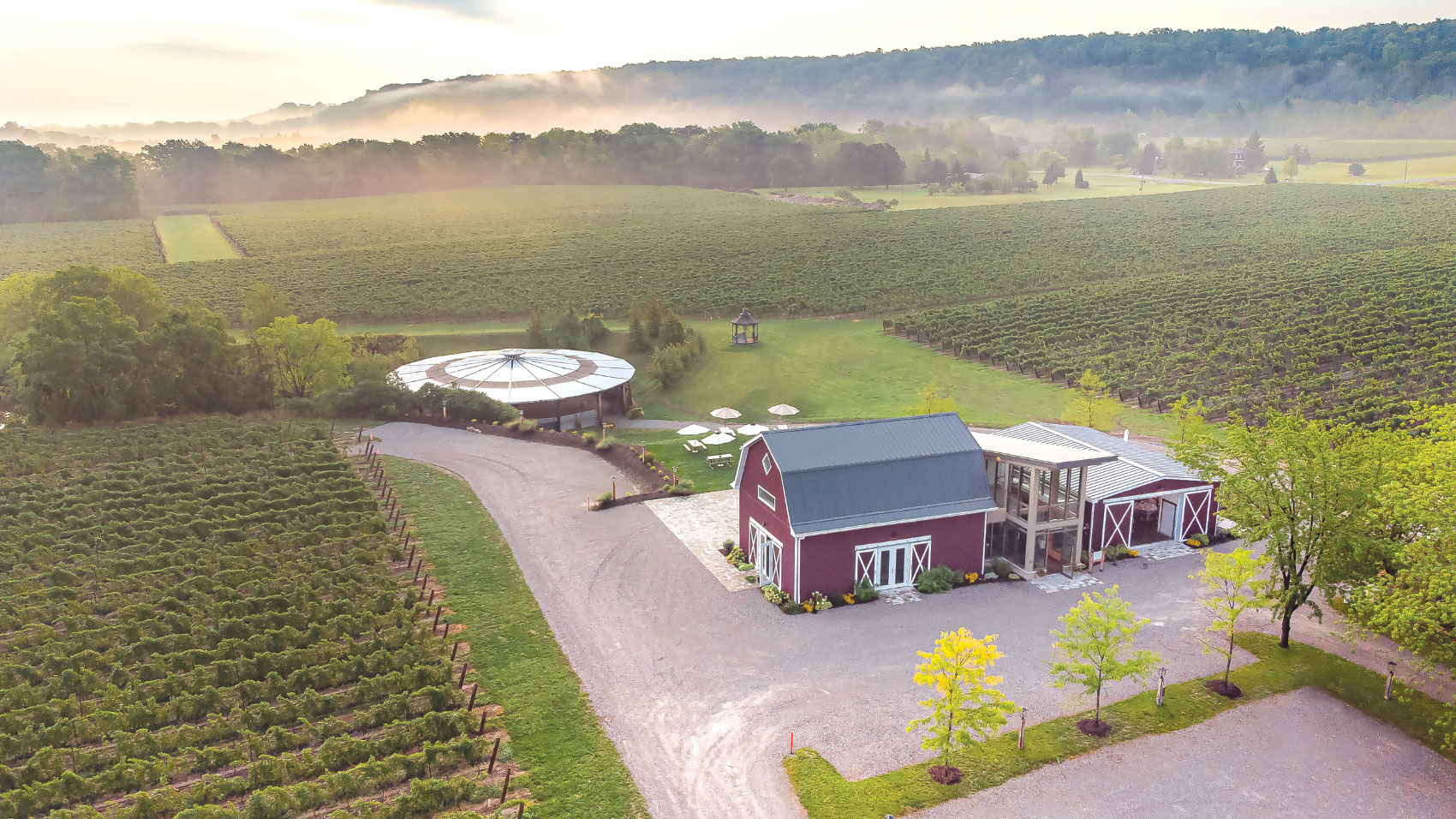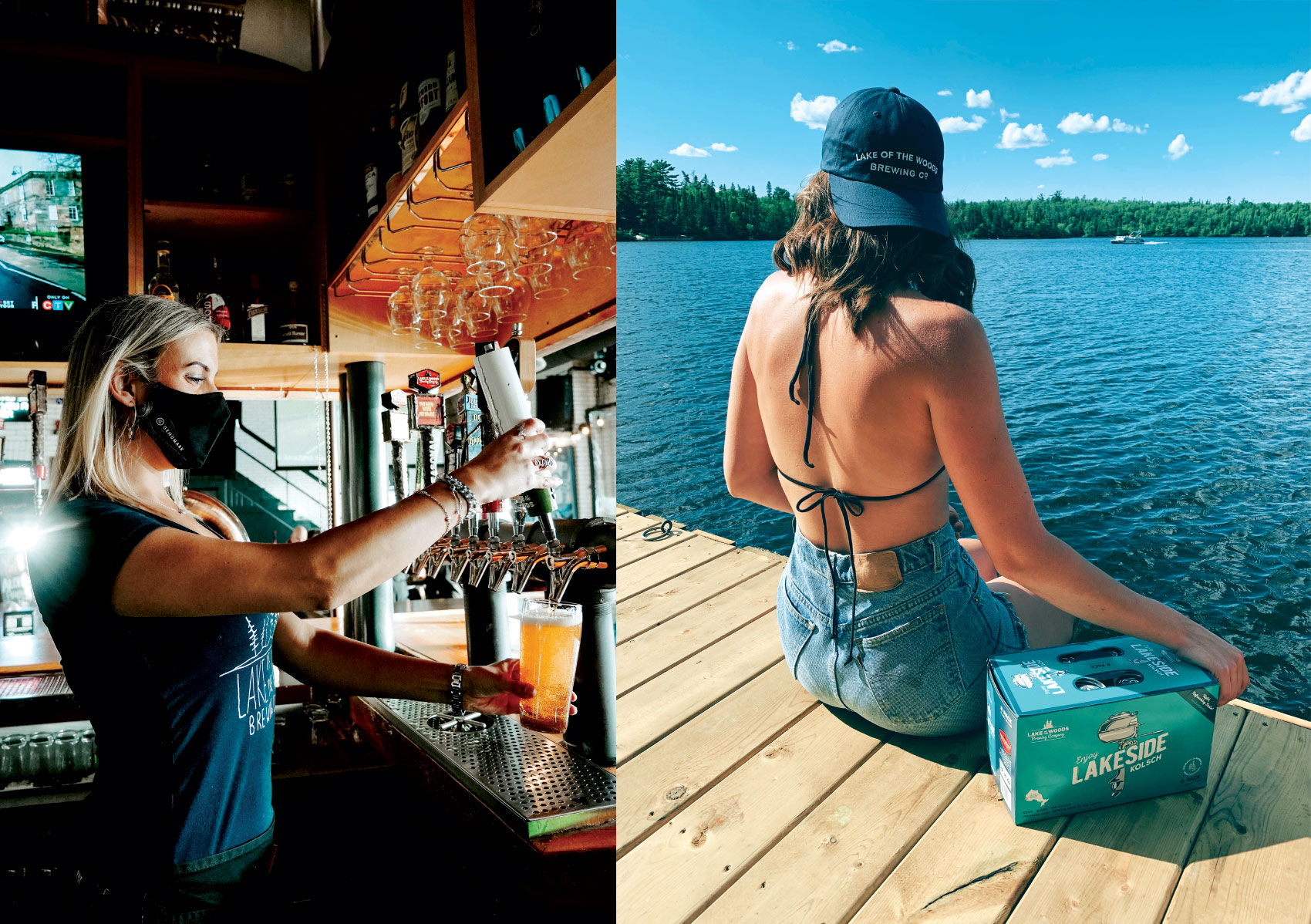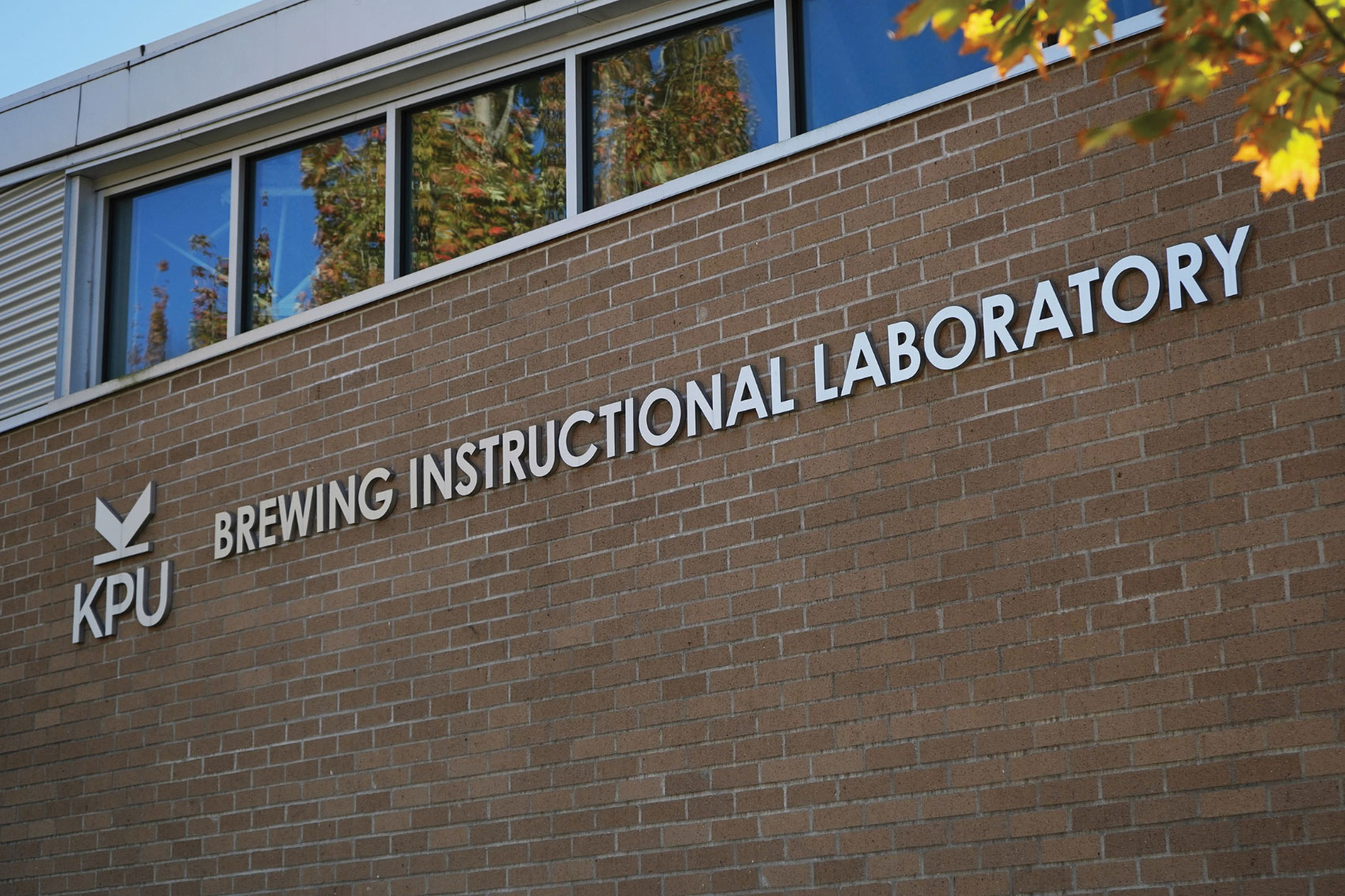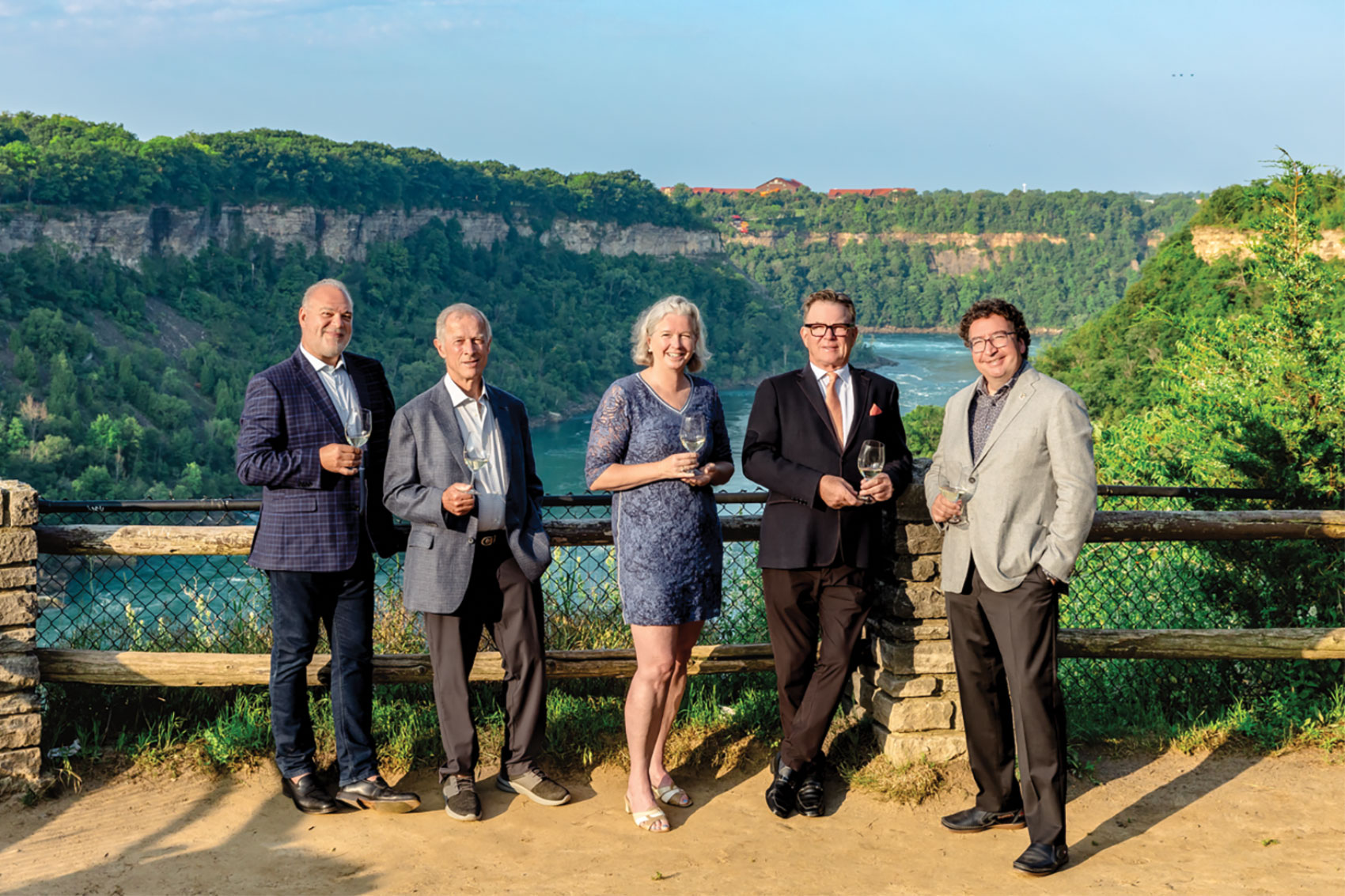Winemaking was not a passion the entire Pennachetti family shared – at least, not at first. As a child, Tom Pennachetti never imagined that he would one day work at a winery – much less his family’s winery.
“I worked in the vineyards growing up and I wasn’t so fond of it,” Tom said. “I wanted a job in the city. That was my big goal in high school.”
Tom’s brother, on the other hand, was interested in wine from a young age. As a child, Len Pennachetti worked alongside his grandfather Giuseppe Pennachetti, an Italian immigrant, helping him tend his vineyards and make wine every fall. As the family began to see the area’s winemaking potential, Len and Tom’s father, John Pennachetti Sr., invested in more land and, in 1978, planted some of the region’s first vinifera grapes.
In 1986, the family joined forces with their friend, Angelo Pavan, to create Cave Spring Vineyard. The property, now about 160 acres, is located on the Niagara Escarpment’s Beamsville Bench, in the heart of Ontario’s top winegrowing region.
Pavan became the winemaker, while Len handled the business side. Together, they oversaw the vineyards. John Sr., passed in 1985, just before the winery started, while mom, Dorothy, the family’s matriarch, played an instrumental role in the business until her death in 2011. Tom and Len’s brother, John Jr., has been a silent partner from the get-go and a key decision-maker at pivotal moments. Meanwhile, Tom followed in the footsteps of Len and Pavan, heading to graduate school to study philosophy.
“Niagara’s complex soils, flora and fauna make ours one of the most biologically diverse wine regions in the world, enabling us to achieve full phenolic ripeness with moderate alcohol levels and brilliant acidity.”
Tom Pennachetti, Cave Spring Vineyard
“When I came back from school, someone needed to market and sell the wines,” Tom said. “I had experience in the cellars and the vineyard, and we were making compelling wines, but someone had to convince people to buy them. So, I hit the road, getting listings in restaurants and LCBO stores. I quickly realized it was a natural fit for me. I found wine intellectually challenging, and communications and branding are in my DNA. Over the years, each of us found our niches within the company.”
These days, nearly 40 years later, Cave Spring Vineyard is one of Canada’s best-known and most celebrated wineries, with a global reputation for distinctive cool-climate wines, especially Rieslings.
“We aim to make authentic wines – meaning they reflect our terroir – maybe a little challenging in their uniqueness, and always delicious,” said Tom, now the winery’s senior vice-president. Others have recognized Cave Spring Vineyard’s authenticity. Accolades include being listed on Top 100 Wineries of 2018 by Wine & Spirits magazine and being nominated as New World Winery of the Year by Wine Enthusiast magazine. The winery is a favourite of the Wine Spectator tasting team, too.
Housed in the former Jordan Winery, a historic estate with cellars dating back to 1871, Cave Spring gets its name from the land where the winery now sits, which early European settlers named after they found magnesium springs and limestone caves on the property.
Cave Spring Vineyard wines are for sale around the world, including 24 U.S. states, Japan, Norway, Finland, Sweden, Denmark, Germany, Belgium, Luxembourg and France. “We have always valued international distribution,” Tom said. “The wine market is global and enthusiasts everywhere are interested in tasting wine from emerging regions like the Niagara Peninsula.”
Eighty to 85 per cent of the grapes are estate-grown. The remainder come from the Andrewes Vineyard in nearby Lincoln Lakeshore, owned by Chris Andrewes, a grower whose Lincoln Lakeshore vineyards have been part of the winery’s stable of sites for three decades. “With the Lakeshore terroir, you get a little more plushness in the wines, compared to the mineral nature of the wines from the Beamsville Bench,” Tom said.
Nine different Rieslings make up 50 per cent of the winery’s production. Twenty per cent of their production involves other whites: Chardonnay, Pinot Gris and Gewürztraminer. Red wines – Cabernet Franc, Pinot Noir and Gamay – make up the remaining 30 per cent. “Cabernet Franc is perfectly suited to our site and with the right vineyard work and cellar approach, we’re finding that it can age 15 to 20 years,” said Tom. “It has become our signature red grape.”
All wines are designated by variety and origin. The entry-level Regional Collection is made mostly with estate-grown grapes from vines that are 10 to 20 years old. The Dolomite Collection is named for the limestone that forms the Niagara Escarpment above the winery. The Estate Collection is produced from the top parcels (or crus) at the estate. The Proprietary Collection – including the legendary ‘CSV’ tier – is at the top of the portfolio, originating from the hearts, or micro-crus, of the best parcels.
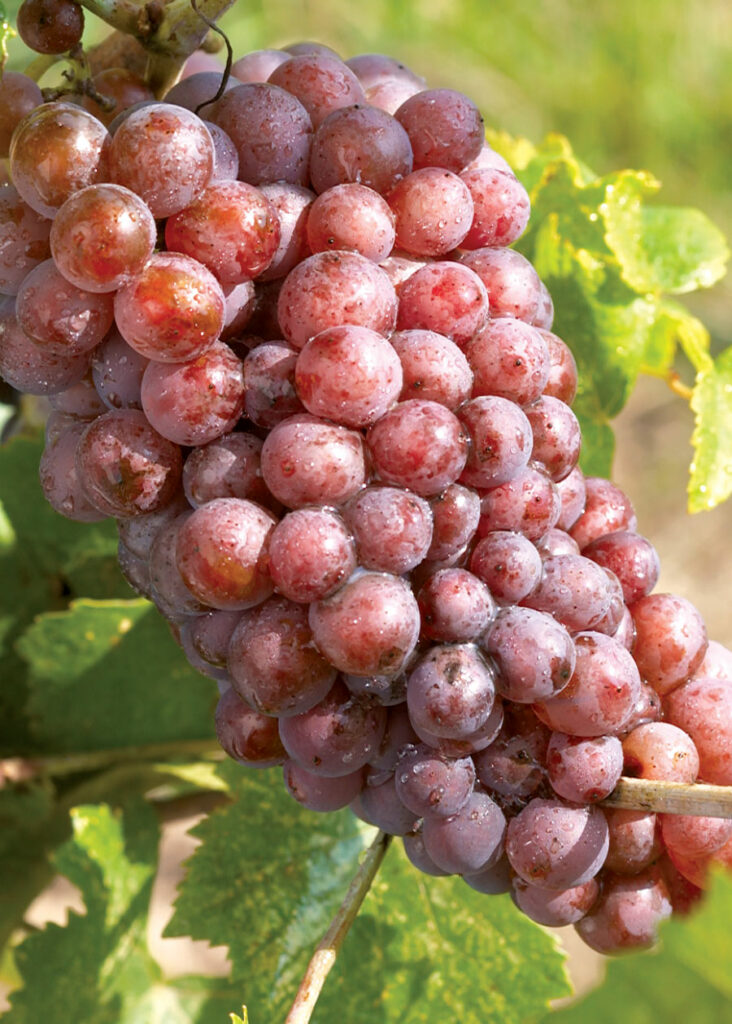
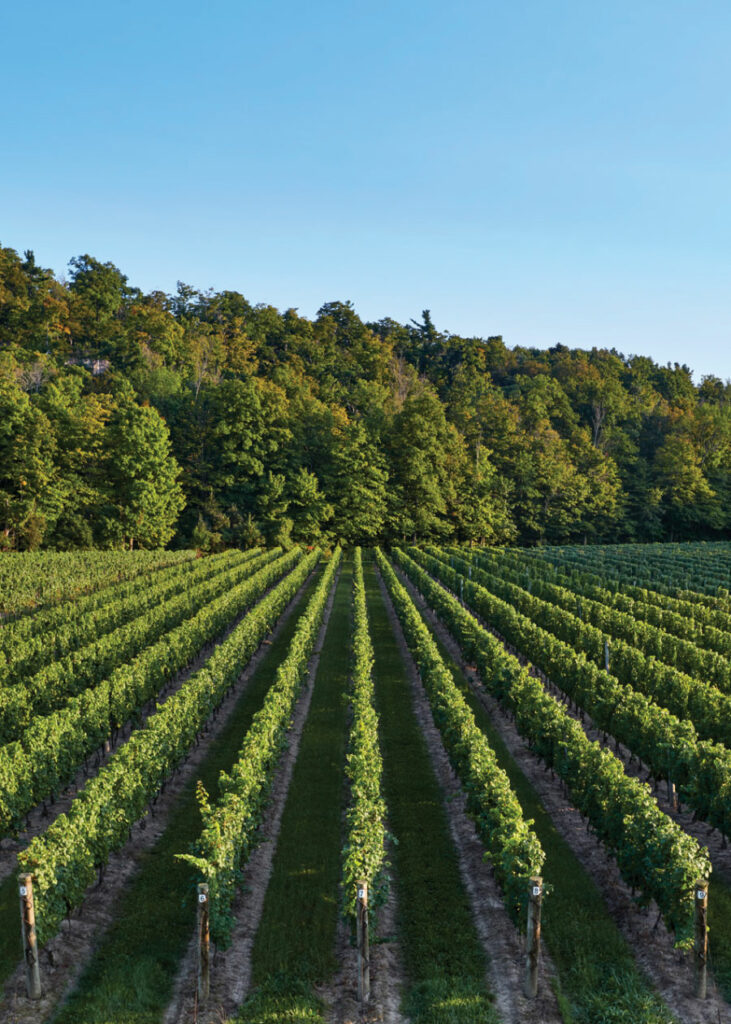
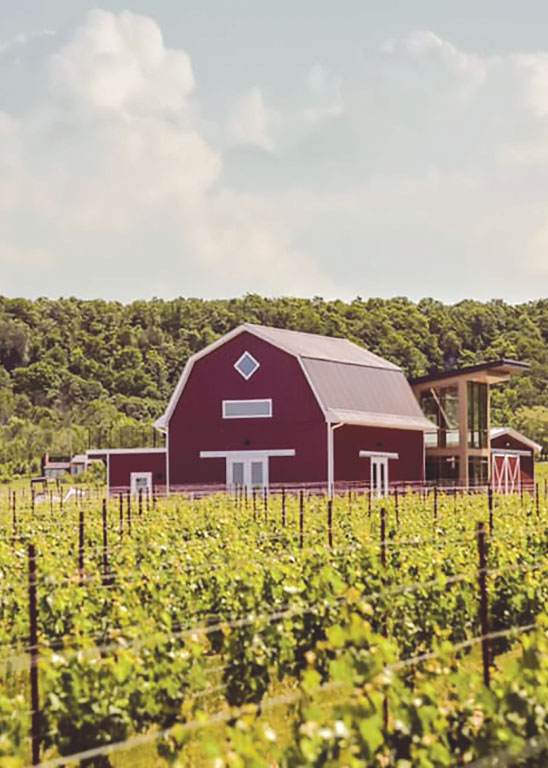
The team at Cave Spring Vineyard practises what it calls “precision viticulture,” says Tom. “We farm every parcel for a specific wine,” he said. “We’re extracting every drop of terroir that we can, with the top wines made from the very finest slivers of vineyards on the estate.”
The first winery to be certified sustainable by Sustainable Winegrowing Ontario, Cave Spring Vineyard makes all of its wines using natural methods, with indigenous yeasts for all fermentations, minimal sulphur additions and neutral oak.
The team mixes many organic methods in the vineyards with practices that prevent rather than treat disease on the vine.
“Niagara’s complex soils, flora and fauna make ours one of the most biologically diverse wine regions in the world, enabling us to achieve full phenolic ripeness with moderate alcohol levels and brilliant acidity,” said Tom. “We respect nature by being proactive and precise in our treatments. We don’t blanket an entire vineyard every time the spray cycle suggests intervention.
“It’s about achieving sound, ripe fruit in the vineyards with the greatest attention to detail and the least possible intervention; ditto in the cellars.”
Innovation is a big part of Cave Spring Vineyard’s philosophy. Winemaker and viticulturist Gabriel Demarco is even working with robotics these days.
One application focuses UV light on specific, harmful weeds, burning them just enough to keep them at bay. Tom says this use of technology in the vineyard is all about bringing more sustainable, low-carbon solutions to vineyard management. “I can see a time, maybe 10 years down the road, when robotics will be a significant part of vineyard management,” Tom said.
The team works closely with Brock University researchers and students on experiments in the vineyards. One ongoing project, which began in 2019, involves identifying wild yeasts.
“We are constantly learning about the yeasts we have here,” said Tom. “We have found dozens of novel yeasts, previously undiscovered, and are experimenting with isolating some of them for specific vinification.”
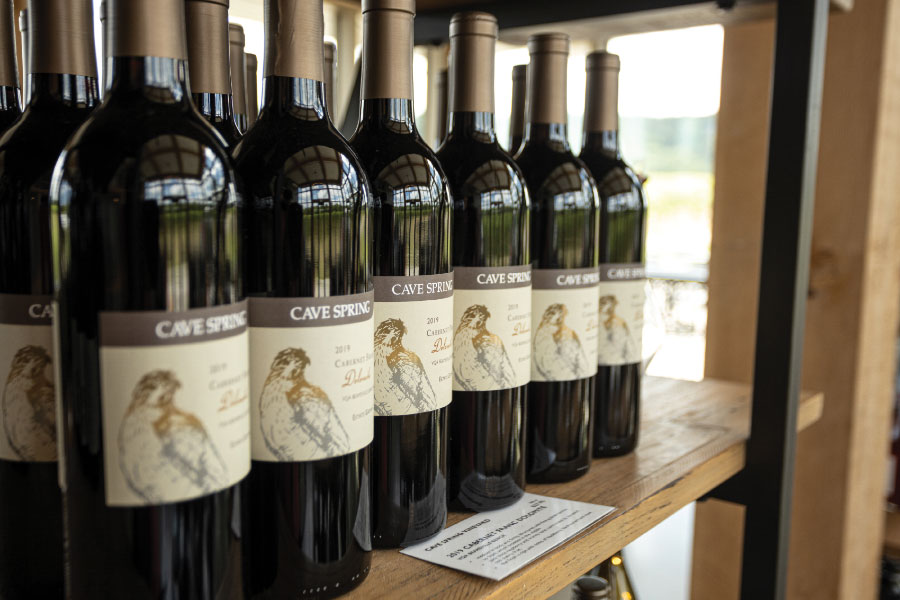
Tom is especially interested in a project involving concrete, historically used in Europe to ferment and mature wine, bringing mouthfeel while maintaining freshness. Working with a concrete mason who lives at Cave Spring Vineyard, they’re developing their own concrete barrels from local limestone, each with about 210 litres of volume. They’re currently used at the winery, and the long-term plan is to scale up production for sale and for expanded use in their own cellars. “At this point it remains a trial project,” Tom said. “But commercialization is coming soon.”
Succession planning of course, is always a discussion at wineries. When Pavan started to talk about stepping back from winemaking, a replacement needed to be found.
Born in London, Ont., Demarco travelled the world in the Canadian Naval Reserve and studied theatre, working as an actor in Toronto. While working as a server at one of the renowned Oliver & Bonacini restaurants in Toronto, he discovered his true calling. He soon began a second degree at the Oenology and Viticulture Institute at Brock University in St. Catharines, Ont., and then interned for a few seasons with the Cave Spring team. He joined the team as assistant winemaker in 2013 and lead winemaker and viticulturist in 2018.
“One of the things we liked about [Demarco] is that he had the desire to learn the vineyard side of things first,” Tom said. “Our mantra has always been that if you’re serious about making quality wine, you must begin in the vineyard. Our winemaker spends more time roaming the vineyards than tending the cellars.”
The Riesling vines the family planted in the winery’s early days came from clones imported from Weis Reben in Germany’s Mosel Valley. Convinced of Niagara’s potential for making quality Riesling, Herman Weis bought land near Cave Spring Vineyard and started Vineland Estates. His daughter, Anne, moved to Canada to help manage her dad’s winery and later married Tom.
When the founders of the winery’s Ontario sales agency, The Vine Agency, retired, Cave Spring Vineyard purchased the agency to solidify its distribution and create alliances with like-minded producers in Italy, California and France.
“There’s much to be said for exchanging ideas,” Tom said. “Oftentimes they learn from us. Recently, a northeastern Italian producer was looking to convert to ambient yeast fermentation, and [Demarco] guided them through the intricacies and pitfalls of the process. They were extremely appreciative.”
The Cave Spring Vineyard team has valued its Wine Growers Canada membership since Day 1.
“Wine Growers Canada does some really important work for our industry,” Tom said. “It helps us get our wines in front of international buyers by facilitating the funding for international trade and media events, and is currently doing critical work on changes to label requirements for wines exported to the European Union.”
Tom and Len’s grandfather, Giuseppe, never lived to see his family’s success as winery owners. He passed in 1973, just as they started buying land. Tom believes his grandfather would be proud to see the accomplishments of his descendants. “No doubt the concrete barrels would intrigue him, seeing as he came to Canada as a mason and made his living working with gravel, sand and cement,” Tom said.
“Concrete – and grapes – are bringing our family’s history in this country full circle.”

